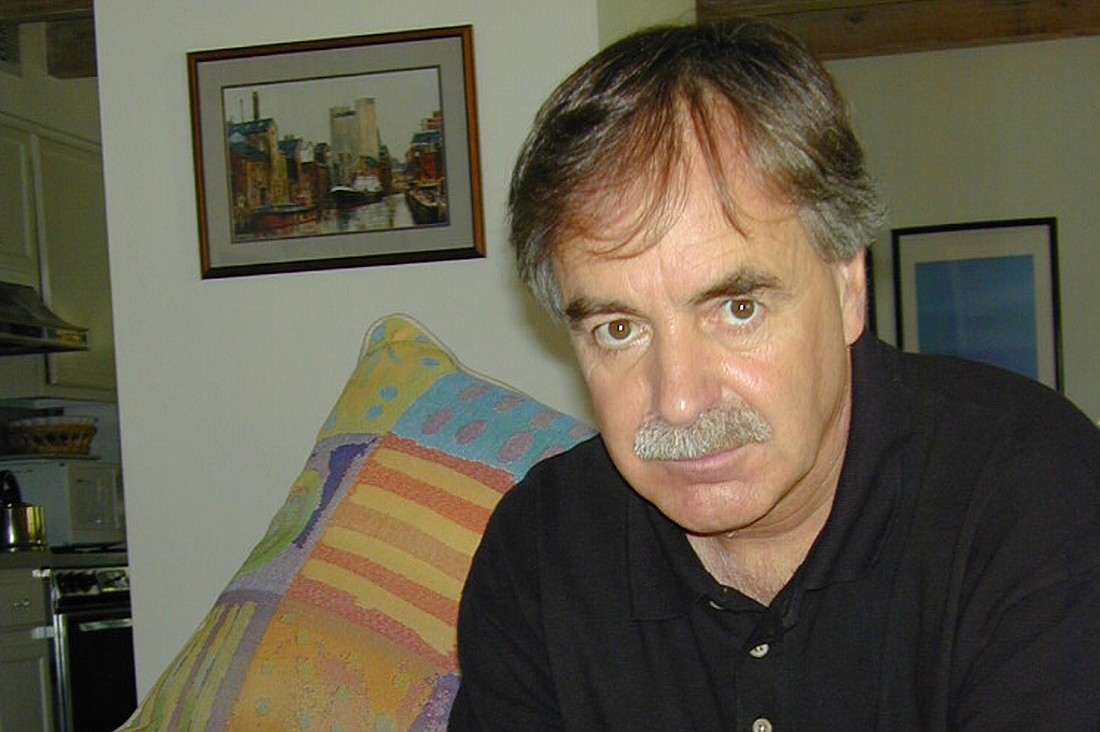- April 26, 2024
-
-
Loading

Loading

As he crawled through the debris, his body covered in thick cement, Paul Berriff remembers thinking, “This is it. I’m going to die.”
The documentary maker had survived a volcano explosion in Nicaragua and a helicopter crash in the Scottish Highlands. He had jumped from a sinking ship in the North Sea. But as the blackness set in, he thought his life was about to end.
The day had started out normally for Berriff, then a Longbeach Village resident who was filming a 15-part series for the Discovery Channel’s Animal Planet about the law-enforcement branch of the American Society for the Prevention of Cruelty for Animals. When the North Tower was hit, he and two crew members headed to Manhattan, N.Y., to investigate. They said they would be back in an hour.
They never returned.
“We were driving toward lower Manhattan and could see smoke drifting across the tower,” Berriff said.
“When the smoke emerged, we saw it wasn’t one but two towers on fire.”
They saw dots appear from the top of each tower and then disappear. Those dots were likely the first jumpers.
“We couldn’t see the sky at that point, but we made our way to the towers,” Berriff said. “Everybody was going the other way.”
They heard a large explosion as the South Tower began to collapse. As the firefighters shouted, “Run, run, run!” Berriff filmed for about six seconds before he took off running. But as he ran, he kept his camera filming and facing behind him; the footage he captured would later be played on news broadcasts and documentaries throughout the world.
The next thing Berriff remembers is his camera leaving his hand, almost in slow motion.
“It went black,” Berriff said. “I didn’t know it then, but I’d been knocked out for about 30 minutes. There was this black, thick cement in my mouth, nose and eyes. The next thing I remember is crawling through all this debris.”
At this point, he believed he would die, but his survival instincts kicked in. He waved his hands in the debris, feeling for motor vehicles, which he knew were parked on a side street. He thought that he could escape by following the vehicles toward the Hudson River.
Soon, he had a horrible feeling: He couldn’t find his sound engineer. He decided to backtrack to the scene, where he found his camera and the crew’s soundtrack. (He later learned she had been pulled from the debris and was not severely injured.)
“I took in this unbelievable, apocalyptic sight,” Berriff said. “The fire trucks were all on fire, and you could see the skeletal remains of one of the buildings.”
Berriff made his way back to the apartment he was renting with his wife, Mickey — just 300 or 400 feet away from the scene. He didn’t realize then that his shirt was covered in blood. His wife then took him to University Hospital in Staten Island, N.Y., where he was treated and released within three hours.
Looking back on Sept. 11, Berriff recalls how a split-second decision for many determined who lived and who died. Many who ran toward the left or toward the right when the South Tower began to collapse died; those who ran straight ahead, as he did, survived.
Berriff returned to his native England shortly after Sept. 11 but also returned to New York and spent the next year filming a documentary, “9/11: The Firefighters’ Story.”
“I don’t think they’ll ever come to terms with what happened,” Berriff said of the firefighters. “They talked about it every day. Everybody knew somebody who had died in the collapse.”
Berriff said it was therapeutic for both himself and the firefighters he filmed to talk about what had happened in the months following Sept. 11. But Berriff, who currently is shooting a documentary about the U.S. Border Patrol in the Phoenix area, thinks of what he experienced that day as part of his work.
“I think, because of the work I do, I think of it as one of my stories,” Berriff said. “I actually saw history being made. I was in it and tasted it and smelled it.”
Read more Longboat 9/11 coverage here.